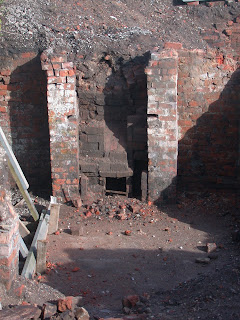I have often written about the conditions thousands of people endured in Ancoats, Ardwick and Little Ireland in the early years of the 19th century, a mix of awful overcrowding, poor quality homes and the ever present threat of disease, unemployment and pauperism. My own family lived in just such conditions in the 1860s. Their home was in a court similar to those you could have found in every major town and city from the early 19th century.
They were dark grim places where speculative builders had thrown up a few poorly built houses on tiny plots of land. Often hidden behind other houses they were only accessed by narrow passages.
Whiteman’s Yard in Derby dated from the 1830s and had been built by Joseph Whiteman who was a baker and flour dealer of Bag Lane which later became Eagle Street. By the time that John and Maria moved there in the early 1870s the houses and court were less than desirable.
They lived at number 5 which just missed looking out on the privies. The house consisted of two rooms, one up and one down and backed directly onto the houses on Carrington Place. The front door opened from the yard into the downstairs room and apart from the range which was used for cooking and heating the only furniture consisted of a table and some chairs.
The outer walls were only one brick thick and those dividing properties were just half a brick. A fact that meant that there was very little privacy as almost any noise could be heard through the wall. The bricks were often of the poorest quality and tended to soak up rain water which made the houses damp as well as cold.
The downstairs floor consisted of stone slabs resting on bare earth which added to the dampness of the houses. And then there would have been the smells. Some of these no doubt came from the privies in the yard but others came from the drains, which were fed into the house from the waste water pipe.
There are plenty of contemporary descriptions of these places, and in the last few years archaeologists have been uncovering the remains of some of them in both Manchester and Salford. Just last year two of us ended up on the site of a row of back to back cellar dwellings hard by the CIS building.
I have to confess that at the end of the trip we both came away with a handmade brick from the site dating back to the 1780s. I hasten to add we had permission.
Pictures; of cellar dwellings, October 2009 from the collection of Andrew Simpson


No comments:
Post a Comment